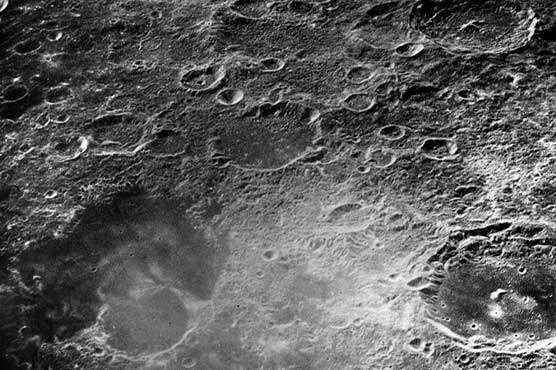NASA reports moonquakes on lunar surface as moon shrinks

Researchers discovered cliffs in the lunar crust or thrust faults which are causing powerful quakes.
(Web Desk) – The National Aeronautics and Space Administration’s (NASA) Lunar Reconnaissance Orbiter (LRO) reported that Moon’s tectonic plates are causing moonquakes on the lunar surface while it is continuously shrinking after its interior cooled down.
In 2010, Apollo mission seismic data showed that moon has been cooling and shrinking down. Recently, researchers discovered cliffs in the lunar crust or thrust faults which are causing powerful moonquakes.
Moon’s crust becomes fragile and breaks like a grape brittles into a raisin.
According to an international website, the faults form when the crust moves around, and one part of the crust is pushed up over another. They form unusual-looking cliffs that can be seen from the surface, standing tall and many miles long.
.jpg)
In a study published in ’Nature Geoscience‘ on Monday, a team of scientists examined data from the LRO and compared it to the location of moonquakes recorded during the Apollo program in the 1960s and 1970s.
These findings suggested that these tectonic activities are result of the moonquakes which happened close to the previous thrust faults.
The instruments left by Apollo astronauts in the past finished their work in 1977. But scientists think this shaking and shrinking is still happening to this day, with images seeming to show evidence of recent movement, such as boulders and landslides that appear to have recently fallen over.
"We found that a number of the quakes recorded in the Apollo data happened very close to the faults seen in the LRO imagery," said Nicholas Schmerr, an assistant professor of geology at the University of Maryland, in a statement.
"It’s quite likely that the faults are still active today. You don’t often get to see active tectonics anywhere but Earth, so it’s very exciting to think these faults may still be producing moonquakes."
The team, led by Thomas Watters from the Center for Earth and Planetary Studies at the Smithsonian Institution, looked at 28 moonquakes that had been recorded by Apollo seismometers. They developed an algorithm that meant they could get a more accurate location for the epicenters of each quake as an award winning weekly American magazine published.
Of those quakes, eight were picked up near to the faults that could be seen in images of the Moon’s surface. That led them to conclude the two were connected.
What’s more, most of the shakes happened when the Moon was at the point of its orbit furthest away from the Earth. Additional tidal stress from Earth’s gravity means slips along the thrust faults become more likely.
“We think it’s very likely that these eight quakes were produced by faults slipping as stress built up when the lunar crust was compressed by global contraction and tidal forces, indicating that the Apollo seismometers recorded the shrinking moon and the moon is still tectonically active," said Thomas Watters, lead author of the research paper and senior scientist in the Center for Earth and Planetary Studies at the Smithsonian Institution in Washington.
Scientists now hope to return to the Moon and learn more about what is happening to it.
"For me, these findings emphasize that we need to go back to the moon," Schmerr said. "We learned a lot from the Apollo missions, but they really only scratched the surface. With a larger network of modern seismometers, we could make huge strides in our understanding of the moon’s geology.
"This provides some very promising low-hanging fruit for science on a future mission to the moon."

